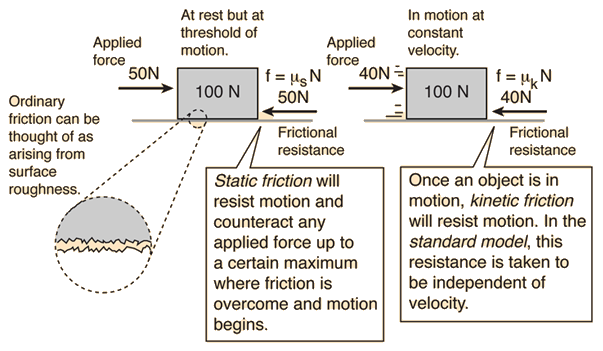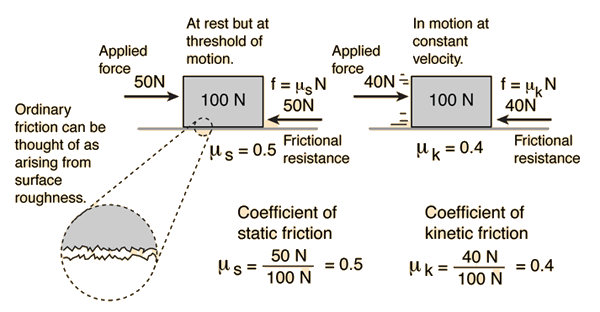Friction and Surface Roughness

In general, the coefficients of friction for static and kinetic friction are different.
Like all simple statements about friction, this picture of friction is too simplistic. Saying that rougher surfaces experience more friction sounds safe enough - two pieces of coarse sandpaper will obviously be harder to move relative to each other than two pieces of fine sandpaper. But if two pieces of flat metal are made progressively smoother, you will reach a point where the resistance to relative movement increases. If you make them very flat and smooth, and remove all surface contaminants in a vacuum, the smooth flat surfaces will actually adhere to each other, making what is called a "cold weld". Once you reach a certain degree of mechanical smoothness, the frictional resistance is found to depend on the nature of the molecular forces in the area of contact, so that substances of comparable "smoothness" can have significantly different coefficients of friction.
An easily observed counterexample to the idea that rougher surfaces exhibit more friction is that of ground glass versus smooth glass. Smooth glass plates in contact exhibit much more frictional resistance to relative motion than the rougher ground glass.
Friction concepts
Coefficients of friction
Plot of friction force
Reference
Jones & Childers, 2nd Ed.
Sec 4.8
| HyperPhysics***** Mechanics | R Nave |

